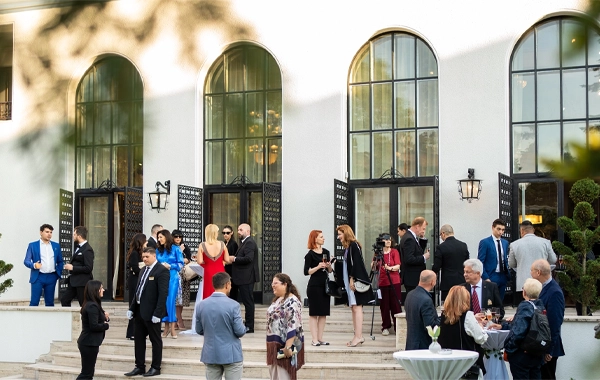The retrospective of Marinela Măntescu-Isac's career, organized by WIN Gallery at the end of last year, brought to the public's attention a celebration of her decades of artistic exploration. The collection proposed for viewing opens a profound perspective into the artist's work, traversing genres from still life to landscape, portraits, or complex compositions. Through a distinctive visual language, Marinela Măntescu-Isac delves into the duality of existence, into the interplay between the transient and the immutable, where the nuances of humanity's emotional landscape are born.
This perpetual search also develops in the direction of the tension between appearance and profound truths. The artist's works often reflect dichotomies such as that between mask and character, as we can distinguish in the series of paintings The Circus. The theme of these acts of entertainment, essentially a classical theme, is brought back to the public's attention, demonstrating the eternal nature of the idea of performance and the roles each of us plays, often contrasting with emotions kept within. This concern is not just a commentary on individual identity but can easily extend into a broader discussion about social norms and conventions, their purpose, and their impact on each of us.
Her landscapes, such as Fall in Thassos or Shore with Poppies in Costinești, possess quasi-sensory properties, vibrations that bring to life the nature depicted in her paintings. The viewer can feel the sensation of wind on their skin or even hear the sound of leaves through the visual interpretation of dynamic brushstrokes and chromatic harmonies. These works go beyond representation through their effect, evoking immersive experiences where illustrated time and space open up to be re-lived.
Regarding still life compositions, both in paintings like Still Life with Lilies, Pendulum and Oyster and Still Life with Chrysanthemums and Quince, the artist's ability to transform ordinary objects into meditative themes is highlighted. Such paintings are not merely aesthetic arrangements but rather symbolic explorations of temporality, beauty, and even decay. Through her technique, Marinela Măntescu-Isac transcends the physical aspects of objects by rendering them in tonal harmonies.






















